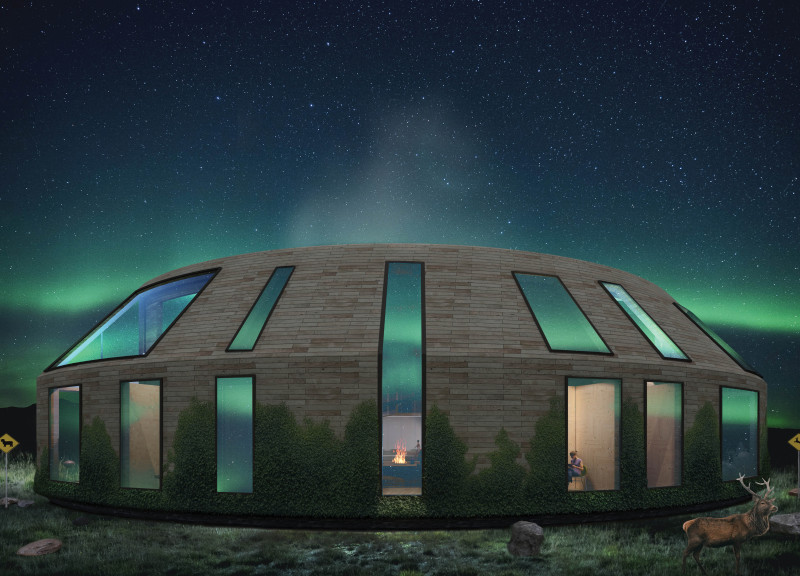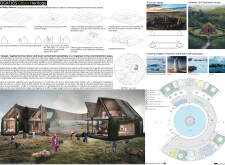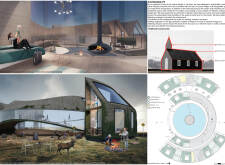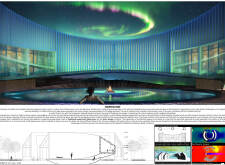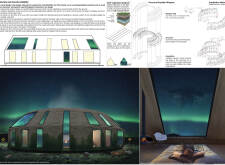5 key facts about this project
The VOGAFJÓS Green Heritage project is located in Iceland, a place known for its stunning natural landscapes and unique geological features. This design combines elements of traditional Icelandic architecture with modern ideas. Its purpose is to serve as a visitor center and a gathering spot for the community. The concept emphasizes a connection to the natural environment, encouraging people to explore and appreciate the surrounding scenery while also focusing on sustainability.
Design Concept
Inspired by Iceland's turf houses, the project features smooth, flowing forms that nod to traditional building styles while meeting today's practical needs. The circular layout allows for expansive views, letting visitors fully engage with the landscape. This design promotes exploration and social interaction, ensuring that the space feels welcoming and open.
Sustainability and Environmental Considerations
The design takes into account Iceland's specific environmental conditions, particularly its geothermal energy resources. By tapping into the abundant heat from natural springs, the structure aims to lessen its reliance on fossil fuels. This sustainable approach not only enhances visitor comfort but also reduces operational costs, aligning with modern environmental practices.
Materiality and Construction Techniques
Locally sourced materials play an important role in the construction. Wood, aluminum, and volcanic stones are key components. The use of wood reflects the region's architectural history and traditions. Aluminum adds a modern touch that offers durability without significant weight. Volcanic stones are incorporated as a thermal mass to help regulate indoor temperatures and reduce energy loss, contributing to the overall efficiency of the building.
Detailing and Spatial Arrangement
The arrangement of the various volumes in the design is intentional, fostering connection among people. Spaces between the different sections encourage interaction and movement. They also provide new viewing angles that enhance appreciation of the natural setting. The design allows the outdoors to become part of the indoor experience, creating a relationship between the built environment and nature. The thoughtful alignment of the building forms reflects a balance between honoring tradition and embracing modern functionality.


